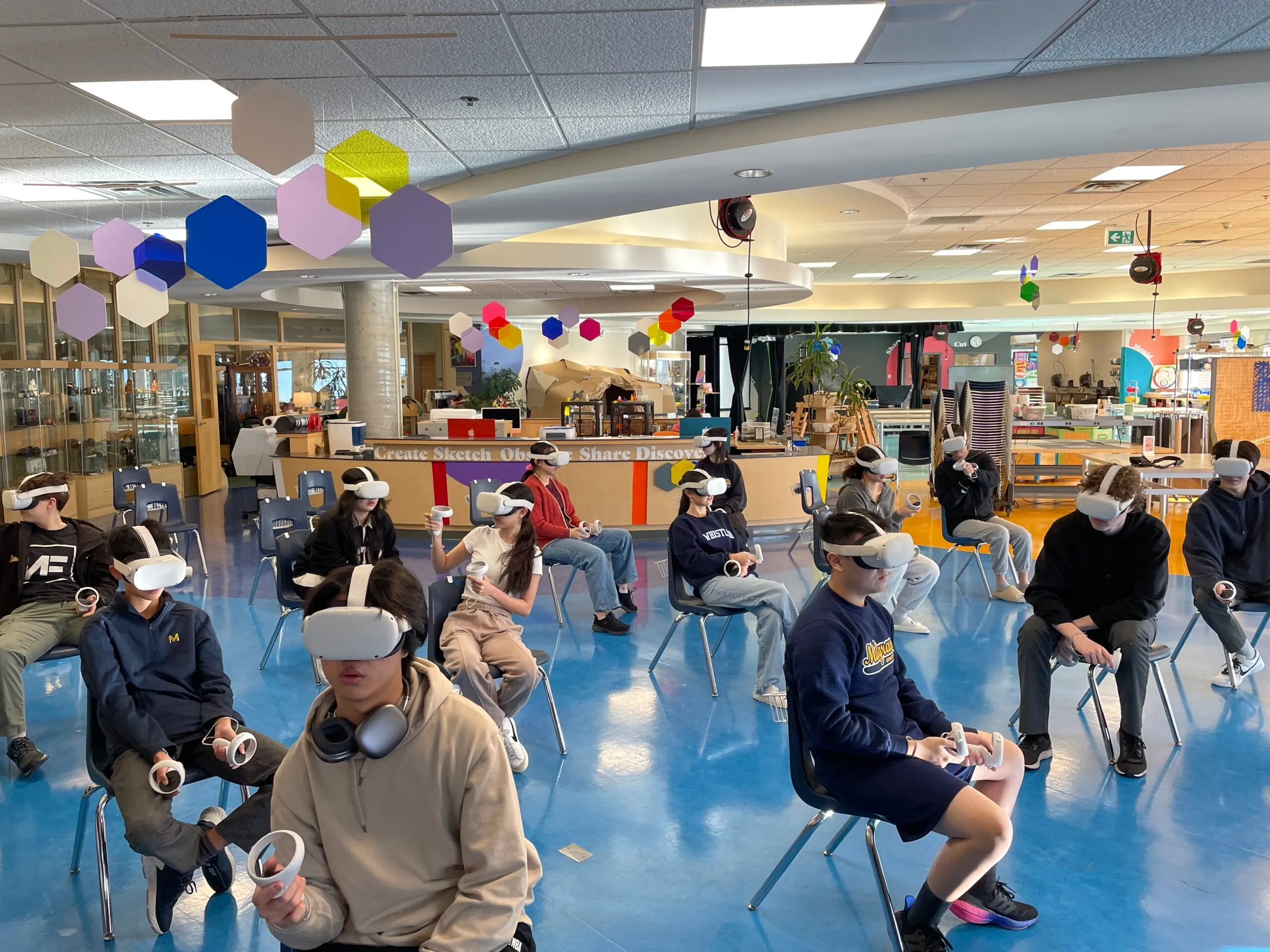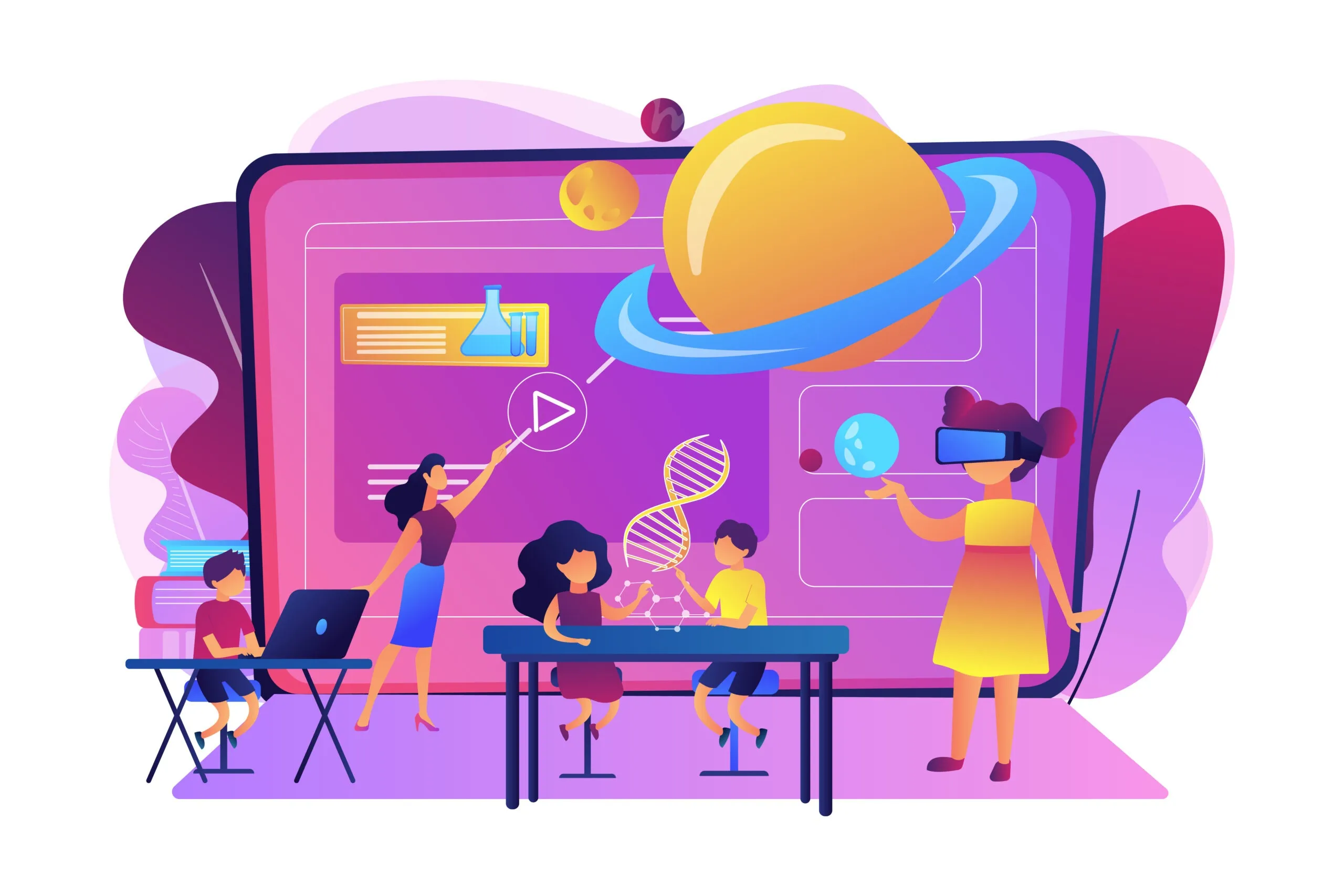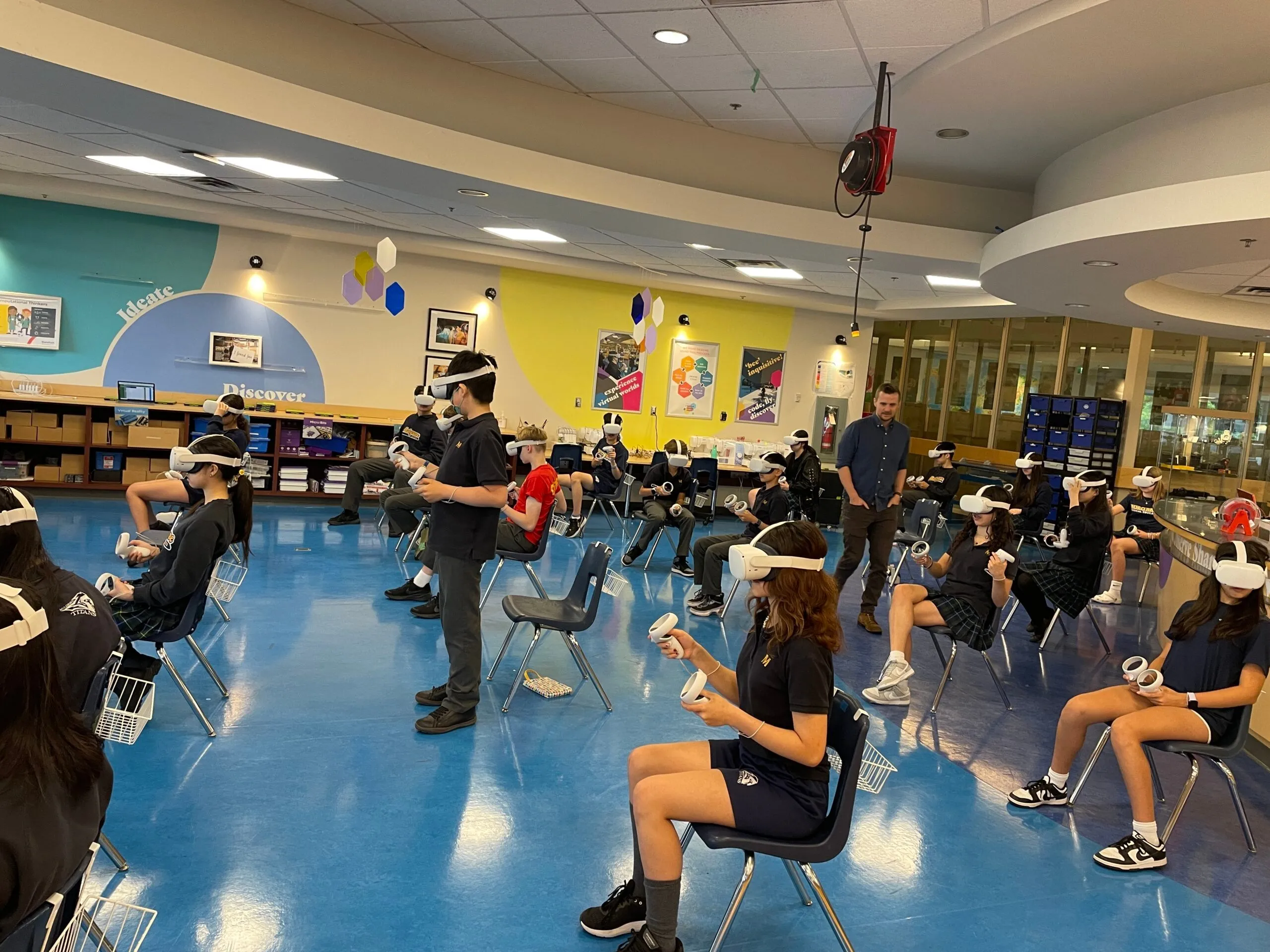
Strengthen Classroom Community with Shared Experiences via VR
While there’s something to be said for disrupting the status quo, any new technology worth its salt has to be clear about why it's worth introducing something new to students.
Let's be honest; 'disruptive' isn't exactly a beloved word in education, no matter how many outsiders try to hang their hat on disrupting education…it usually means more headaches and fewer breakthroughs. So, it's only natural for educators and stakeholders to be wary of Virtual Reality (VR) as the newest technology in schools.
But VR isn't just another consumer fad that is destined to complicate classrooms. Instead, think of VR as a medium for learning that brings students together and creates experiences too engaging to miss.

Is VR learning just another overhyped tech tool for students in schools?
When social media first hit the scene, it promised to connect us in ways we’d never imagined. The goal was to foster community across continents and time zones and to bring people together. In many ways, it succeeded—but without a clear purpose and mindful usage, it also led to some unintended consequences. Hours spent scrolling through feeds, or 'doom scrolling,' is just one example of how a tool meant to unite can end up eating our time and isolating us.
Like social media, VR has the potential to strengthen our classroom connections and community. It promises immersive environments where students can collaborate, explore, and learn together. However, just as with social media, without thoughtful and purposeful integration, VR could fail to fulfill its potential. It risks becoming a distraction or a novelty rather than a powerful educational tool.
To really make a difference in the classroom, VR needs to be rolled out with clear goals: improve interaction, teamwork, and active engagement. Educators need to craft VR experiences that do more than just fit with the curriculum—they should spark real conversations and forge connections among students. By intentionally integrating VR this way, it acts as a bridge, not a barrier, in helping students connect in meaningful ways that strengthen their learning and social skills.
How does VR learning help teachers and students?
VR's differentiator is its power to unite students and build community. When teachers see students put VR headsets on, at first glance, they're witnessing what looks like isolation–students enclosed in their own virtual worlds. But, beneath those headsets, there's a vibrant exchange where students connect, collaborate, and engage with each other. As van der Meer and colleagues highlight, VR isn't just another tech tool; it's a powerful means to enhance collaborative learning, develop crucial social skills, and build interpersonal awareness among students (van der Meer et al., 2023).
For Students: VR changes learning experiences from passive to interactive. Once students break free from passive activities, they can work together on projects in a virtual space. They can conduct simulations in virtual labs that are too expensive or dangerous to replicate in the real world or practice social skills in a controlled environment. This immersive interaction makes learning more engaging and impactful. It stays with students long after the lesson is over.
For Teachers: VR offers a dynamic platform to guide and monitor student interactions and progress. They can create and control environments that cater to various learning styles and needs. This makes it easier to provide individual attention. Teachers can facilitate discussions and lead hands-on learning which is valuable for understanding complex subjects.
Together, VR helps bridge the gap between theory and practice. It makes education a more engaging and effective process for everyone involved.
How VR technology brought students in this school together
Kelly Powers, a middle school science teacher at the Hackley School in Tarrytown, NY, has seen great results using VR with her students. The VR headsets united the class and let them show off their creative and problem-solving skills. Students worked collaboratively with Powers' guidance to build out an immersive rock hammering experience.
Powers encouraged the students to take initiative, having them reach out to the Zoe team to request specific assets for different types of rocks and minerals. Other students began to take notice of this small group project, Powers said, "students that had never had the opportunity to look at VR were asking to create and be part of it".Throughout the module, Powers noticed a consistently higher level of engagement and classroom togetherness, with students offering to help each other unprompted.
In Kelly Powers' classroom, VR technology has done more than facilitate a collaborative environment; it's encouraged students to take the initiative, to show up, and to support each other. They're creating a community bonded through shared, dynamic learning experiences where teachers don't even have to ask them to do it. They just do.
VR learning: What are the benefits, supports, and strategies?
When it comes to new tech like VR in the classroom, it's easy to get caught up in the what-ifs and the buts. Instead, focus on how VR can actually improve teaching and learning. Here's how educators can start embracing VR, focusing on the perks rather than the pitfalls:
Focus on the Benefits: Remember, VR is more than a fancy gadget; it's a tool that brings lessons to life. It makes learning interactive and immersive. When that happens, student engagement and understanding naturally increase.
Training and Support: Sure, jumping into VR initially seems like too much. That's why there are plenty of training sessions and resources available. These help educators get comfortable and confident with the tech and make the transition smoother.
Embrace the Curve: It's like when whiteboards replaced chalkboards—there was a learning curve, but the benefits were undeniable. VR is similar. It might take a bit to integrate, but the outcomes? Completely worth it.
VR education gets students locked into their learning
Virtual reality has the power to change education. Is it cool technology? Yes, but it's so much more than a novelty. VR learning forges real connections, sparks interest, and brings subjects to life that traditional methods just can't match. VR isn't something to fear; it's a dynamic addition to educational toolkits.
So, why not give it a shot? If you're curious about how VR can reinvigorate classrooms, reach out to Zoe Immersive for a demo. Let's make learning something students don't just have to do—they get to do. See how VR can rewrite the rules on teaching and learning—without compromising standards, rigor, or time.



